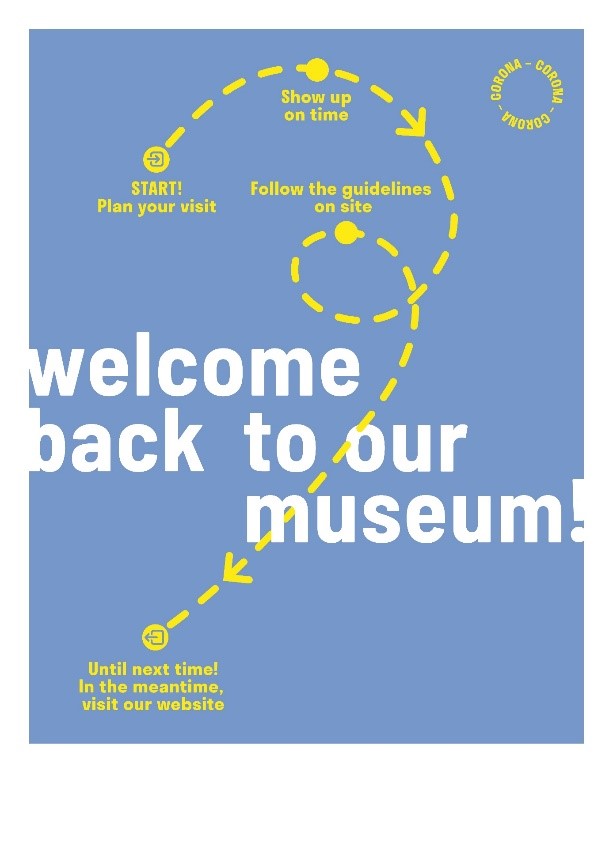It may be difficult to understand, but the Royal Museum of Fine Arts Antwerp, the museum which I work for, has been closed for a major renovation for almost 9 years. The closure of museums that is now taking place all over the world is in that respect nothing new to me. From my position as a board member at ICOM BELGIUM FLANDERS, I’d like to offer you a general look at how the Flemish museums have experienced and are experiencing this strange period.
How it began
2020 should have been an interesting year for our museums. With the support of Tourism Flanders, the sector celebrated the year of the painter Jan Van Eyck, culminating in the blockbuster exhibition and once in a lifetime experience at the Museum of Fine Arts in Ghent. Expectations were at 300,000 visitors.
The images of a lockdown in Wuhan that reached us during the months of January-February still had something surreal about them. We were all convinced that such a thing would never happen in Belgium. But it turned out completely different. After the week of school holidays that ran from 24 February to 1 March, travellers returned from their ski resorts and COVID-19 was massively imported into the country.
The following week of 9 March was a strange one. Every day the signals and media coverage changed. At that time, no one could properly assess the true extent of the pandemic. On the 12th of March there was a general advice not to let indoor events with more than 1,000 people take place. By the end of that week, most museums had closed their doors, not knowing for how long.
The initial reflex: strengthening the digital presence
The museums closed their doors without any immediate prospect of reopening. Most museums took advantage of the closure to strengthen their digital presence and not to lose the connection with the audience. Through social media, the collections were presented in creative ways. The museums first and foremost wanted to bring their public some entertainment and messages of hope during the lockdown.
As the situation improved, it became possible to set up initiatives to make collection presentations and exhibitions digitally accessible. In this way, ICOM Belgium Flanders, the Flemish Museum Association, arranged an accessible and affordable solution for the development of virtual museum tours. In this way, even small museums with few resources can organise virtual tours. Initiatives of this kind have been very successful. No fewer than eight hundred thousand visitors signed up for a virtual tour of the Jan Van Eyck exhibition in the month of April.
Finances
Although the Belgian museum sector is relatively more heavily subsidised than the English sector, this does not make the impact of the closure any less dramatic.
The museum’s own revenues from tickets, events, shop and café were all completely lost. Ironically, the museums that had put the most effort into this in recent years have now been hit the hardest.
Big savings are announcing themselves and not only for this year, but also for the years to come.
Staff
Most permanent staff members were able to continue their work from home. In those cases where this was not possible, the range of tasks was changed or the system of service exemption or temporary unemployment offered a solution.
18 May: reopening

At the end of April, the sector began lobbying for a reopening of the museums. An open letter was sent to the Minister of Culture and the Prime Minister and with success, because on the 18th of May, International Museum Day, the museums could reopen. The most important measures were
1. Visits are only possible after reservation of a time slot.
2. Limiting the number of visitors: in each museum the maximum is 1 visitor per 15 square meters.
3. A circulation plan so that visitor flows do not intersect.
The limitation on the number of visitors makes the reopening symbolic rather than economically profitable, but it has to start somewhere. The many hygiene requirements have also increased operating costs, just think of the purchase of plexi screens and the extra cleaning.
The future? Reorientation of the business model
Most discussions question the prevailing business model, which is mainly based on a growth in visitor numbers through the organization of large blockbuster like exhibitions with many loans.
This model is in any case difficult to apply in Belgium due to the lack of state indemnity, which makes the insurance costs of loans even more important.
Because of the small domestic market and the still limited foreign potential, the webshop has never been a priority for Belgian museums. This would probably change after COVID-19.
At the moment it is not an issue, but at some point we should dare to charge money for virtual museum experiences and increase ticket prices as compensation for all additional safety and hygiene measures and the losses incurred. A lot of free online content has been made available that has not yet been commercialised.
